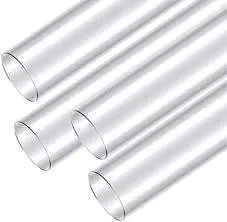Nov . 26, 2024 08:50 Back to list
HDPE Pipe Couplings for Efficient and Reliable Pipe Connections in Various Applications
Understanding HDPE Pipe Couplings A Comprehensive Guide
High-Density Polyethylene (HDPE) pipes have gained popularity in various industries due to their durability, flexibility, and resistance to chemicals. To connect these pipes securely and effectively, HDPE pipe couplings play a crucial role. This article delves into the importance, types, and benefits of HDPE pipe couplings, helping you understand their significance in pipe systems.
What are HDPE Pipe Couplings?
HDPE pipe couplings are fittings used to connect two sections of HDPE piping. They facilitate the transition from one pipe to another, ensuring a seamless flow of liquids and gases in various applications, such as water distribution, sewage disposal, and industrial operations. These couplings are designed to withstand harsh conditions, making them an essential component in HDPE piping systems.
Types of HDPE Pipe Couplings
1. Standard Couplings These are the most common type of couplings used in HDPE piping systems. They create a secure connection between two pipes of the same diameter. Standard couplings come in various sizes to accommodate different pipe diameters.
2. Reducing Couplings Used when connecting pipes of different diameters, reducing couplings play a vital role in adapting the size of the pipe network. They help maintain a consistent flow and prevent blockages caused by sudden changes in pipe size.
3. Clamp Couplings These offer a simple connection method, utilizing clamps to secure the pipes. Clamp couplings are particularly useful in temporary setups or when quick repairs are needed, as they can be easily installed and removed.
4. Flexible Couplings Designed to accommodate movement and vibration, flexible couplings are ideal for situations where the piping system may experience shifting due to ground movement or temperature changes. They provide a level of flexibility that standard couplings do not offer.
5. Specialty Couplings These couplings are designed for specific applications, such as connecting HDPE pipes to other materials like PVC or metal pipes. Specialty couplings ensure a leak-proof connection in mixed-material installations.
hdpe pipe coupling

Benefits of HDPE Pipe Couplings
1. Durability HDPE couplings are known for their strength and resilience. They resist corrosion, impact, and weathering, making them suitable for both underground and above-ground applications.
2. Ease of Installation Many HDPE couplings feature a simple design that allows for quick and efficient installation. This can significantly reduce labor costs and project timelines.
3. Chemical Resistance HDPE materials are resistant to many chemicals, making these couplings ideal for use in industrial settings where exposure to hazardous substances is a concern.
4. Versatility HDPE pipe couplings can be used in a variety of applications ranging from water supply systems to drainage networks, showcasing their adaptability across industries.
5. Joint Integrity The coupling design ensures a tight seal between pipes, minimizing the risk of leaks and enhancing the overall integrity of the piping system.
6. Cost-Effective While the initial cost may vary, the long-term benefits of using HDPE pipe couplings, such as reduced maintenance and replacement needs, make them a cost-effective solution for many projects.
Conclusion
HDPE pipe couplings are vital components in modern piping systems, ensuring secure and efficient connections between HDPE pipes. With various types available, they cater to different needs and applications. The durability, chemical resistance, and ease of installation associated with HDPE couplings make them a preferred choice for professionals in several industries. Understanding the importance and functionality of these couplings can lead to better decision-making when designing and maintaining piping networks, ultimately enhancing system performance and reliability.
-
High-Quality PPR Pipes and Fittings Durable ERA PPR & PVC PPR Solutions
NewsJul.08,2025
-
Black HDPE Cutting Board - Durable, Non-Porous & Food Safe HDPE Plastic Cutting Board
NewsJul.08,2025
-
High-Quality CPVC Panel Durable HDPE & PVC Panels Supplier
NewsJul.08,2025
-
Double PE Welding Rod Supplier - High Strength, Durable & Versatile Welding Solutions
NewsJul.07,2025
-
High-Quality PVC-O Pipe Supplier Durable 75mm PVC Pipe & Connections Leading PVC Pipe Company
NewsJul.07,2025
-
HDPE Drainage Pipe Supplier – Durable & Corrosion-Resistant Solutions
NewsJul.06,2025

